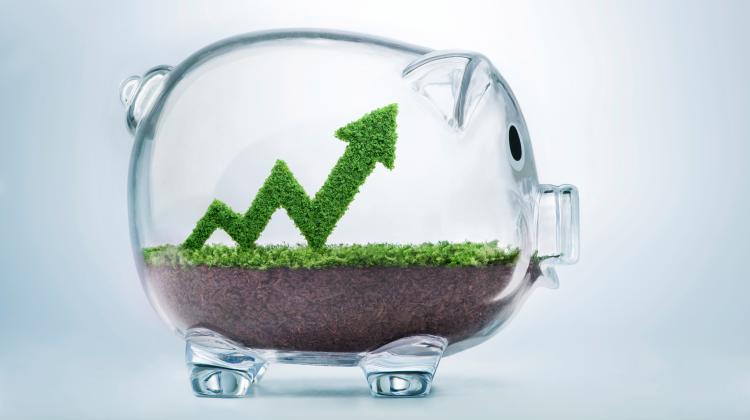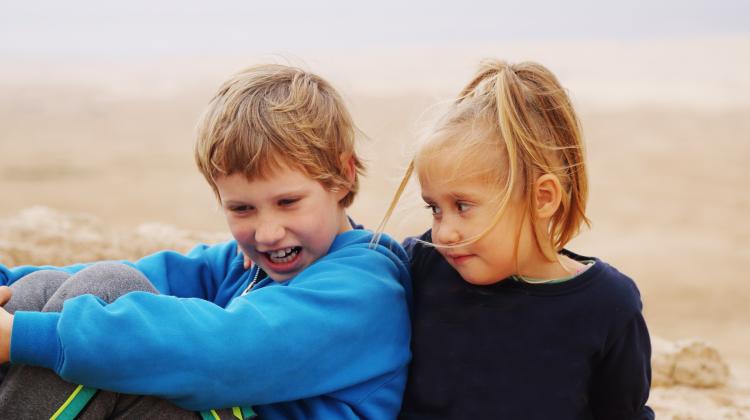Economist explains how consumers can manage climate risk
 Credit: Adobe Stock
Credit: Adobe Stock
Drought, floods, fires, storms, increase in energy prices, income decreases in some sectors of the economy - this is only a small part of the costs global warming may be associated with.
Some banks already manage climate risk, for example in their policies for granting loans.
But now an economist from the Financial System Department at the Warsaw University of Economics wonders whether consumers do the same.
“We have surveyed about 1,000 Polish borrowers,” says Dr. Łukasz Kurowski. “We asked if they would be able to pay their loans if their houses incurred storm or fire damage. In the event of a fire, 40 percent of respondents might not be able to make loan payments, and in the event of a storm - almost 27 percent.
He adds that in connection with global warming there could be more extreme weather events, and these events not only cause damage to assets (which are often insured), but also reduce the ability of borrowers to pay their loans.
He adds: “Our research also shows that a certain percentage of Polish borrowers may be in trouble due to rising energy prices. These prices are not only related to Russia's current policy and the war in Ukraine, but also with the policy to stop global warming.
“The energy bill consists of several components. A significant part is the cost of carbon dioxide emissions related to the purchase of CO2 emission allowances. Prices of allowances will increase from year to year. Until we switch to renewable energy sources, this it will be associated with higher energy prices.”
The effects of storms or fires, as well as rising energy prices are, however, only a fraction of costs that may appear in connection with global warming. But how to predict climate risk and take it into account in the household budget? 'This is extremely difficult to estimate directly. Estimates are largely based on historical data, and climate change is only now taking place', says Dr. Kurowski.
In his opinion, when it comes to assessing climate risk, the banking sector may be an example for other enterprises, and to some extent also for households.
Kurowski says: “Banks not only monitor climate risk, but also manage it; they assess and try to include this risk in their processes. It involves not only the progress of work on estimating the minimum level of capital that would ensures the security of the bank (and its clients), but also the credit policy.”
According to Kurowski, under the existing requirements, banks are required to calculate various, well known risks related to their operation. Climate change means that accurate banking risk analyses must take into account the effects of global warming. He continues: “Banks must monitor climate risk not only because of their security, but also the related security of savings that customers keep in banks.”
I n addition he mentions that in the financial sector there are two types of risks associated with global warming: physical risk and transformation risk. Physical risk includes the effects of extreme weather events.
PHYSICAL RISK
According to the economist, over the last five years the amount of damages related to extreme weather events in Poland was about PLN 1 billion (the dominant factor so far is strong wind).
Banks must take this physical risk into account not only by calculating that a fire or a gale can cause damage to one of the facilities, but also by expecting that as a result of weather events, loan security of some customers may be destroyed. This includes floods that can prevent the loan repayment. Therefore, when granting a loan, banks monitor whether a given property is not in a flood area. Having insurance will reduce this risk. However, according to Kurowski, insurance alone may be insufficient, because the occurrence of an extreme weather event will not only cause destruction of security, but can reduce customers' ability to repay the loan.
Physical risk also applies to agriculture, where drought is a particular threat to the solvency of borrowers. “The Supreme Audit Office report (https://www.nik.gov.pl/plik/id,23582,vp,26318.pdf) showed that in 2019, 350,000 applications for support were submitted in connection with losses in agricultural production,” Kurowski says.
OPPORTUNITIES AND RISKS OF TRANSFORMATION
Another type of risk is transformation - the risk associated with the fact that the economy must gradually transform to adapt to the changing reality and to stop the catastrophic changes associated with global warming. This includes investments necessary to reduce greenhouse gas emissions. EU documents require Poland to implement such a policy.
Dr. Kurowski cites calculations of analysts, according to which quick transformation will be associated with a much lower cost than avoiding this transformation, delaying it and covering more and more losses (physical risk) associated with global warming.
The economist adds that transformation may be associated with losses in some sectors of the economy, especially the high-emission ones such as energy and mining. If these sectors do not use the opportunity now and fail to come up with an idea how to harm the environment less - they will incur costs.
And with them - those who now benefit from these sectors. This includes not only about people employed there, but also holders of securities or institutions that provide financing to this sector. Therefore, banks must also take this risk into account.
Another example of economy sectors that has to take the risk of transformation associated with climate change into account is water transport. Dr. Kurowski points out that with droughts and decreasing water levels in the rivers, its profitability may drop, and the prices of services provided by water transport will dynamically increase. Changes will probably also affect tourism related to winter sports, as the decreasing amount of snow will result in a need for artificial snow. In turn, coastal businesses can suffer because of the reluctance of tourists due to a decreasing quality of sea water and cyanobacteria blooms (which is indirectly related to the low water level and high concentrations of biogenic substances in rivers). Another problem may be rising sea levels and the need to add sand to prevent beaches from disappearing.
GREEN REPUTATION CONVERTED INTO MONEY
Reputation is for banks a completely separate issue related to climate risk calculations. Dr. Kurowski's research shows that customers are becoming more and more sensitive to ecology and climate issues. “Being green begins to build a competitive advantage,” he says. “In addition, it helps to comply with the regulatory requirements that are coming. For these reasons, it is beneficial for banks to prefer green products over 'dirty' ones. It's about changing the financing parameters, for example lower bank margins for green investments.”
An example is granting a loan on more favourable conditions with the purpose of financing the construction of renewable energy sources for residential buildings. When helping to finance such an investment, the bank not only engages in pro-climate activities, but also has a better chance that the customer - becoming more independent of the increase in energy prices - will be able to pay off the loan. In addition, the bank gains a green reputation. “This,” says Kyrowski, “is how banks can play an important role in financing transformation."
HOW TO TAKE THE CLIMATE RISK INTO ACCOUNT IN THE HOUSEHOLD BUDGET
By drawing conclusions from the activities that banks already engage in, you can try to better estimate how climate change will affect your household budget. What is worth doing:
- learn the risk of flooding at the place of residence or workplace;
- check the models of raising sea levels and see if there is a threat to your place of residence;
- consider insurance against the effects of violent weather phenomena; remembered that if there are damages, insurance may not be enough to quickly return to normal life;
- ensure energy efficiency - insulate the house, invest in renewable energy sources;
- know the forecasts of electricity prices for future years; bear in mind that agricultural drought can contribute to the increase in food prices;
- farmers: consider the profitability of growing plant varieties that do not cope with drought, think about crop irrigation systems;
- people employed in high-emission sectors: think about the opportunities associated with energy transformation; what are the career opportunities in other sectors;
- have sufficient savings taking into account the above risks.
THE EDUCATED WILL GAIN
“Education has a big role in preparing the society for climate change,” Kurowski continues. Those who already understand global warming will take steps to slow it down and prepare for its consequences. They will not be surprised by additional costs associated with global warming. People who do not understand global warming, in turn, can lose a lot by closing their eyes to forecast problems.
“Therefore, it is worth considering what makes these people deny global warming - what is the source of their anxiety that prevents them from taking action?”
He adds that because global warming is the real threat, not the transformation that awaits, “It should be considered an opportunity.”
He continues: “The war in Ukraine is now at the centre of public debate. Rightly so - this is a very important topic that we should focus on, but we must not forget about global warming. We are now fighting the effects of the war, but something may be lurking around the corner that in the future will turn out to be an even greater problem than the geopolitical risk.”
PAP - Science in Poland, Ludwika Tomala
lt/ ekr/ kap/
tr. RL
Przed dodaniem komentarza prosimy o zapoznanie z Regulaminem forum serwisu Nauka w Polsce.



















